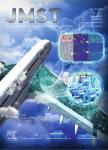Aging Behaviors of W-Ni-Fe Ternary Alloys with High Ni-to-Fe Ratios
Aging Behaviors of W-Ni-Fe Ternary Alloys with High Ni-to-Fe Ratios作者机构:Sch. of Mat. Sci. and Eng. Univ. of Sci. and Technol. Beijing Beijing 100083 China
出 版 物:《Journal of Materials Science & Technology》 (材料科学技术(英文版))
年 卷 期:2003年第19卷第6期
页 面:631-633页
核心收录:
学科分类:08[工学] 080502[工学-材料学] 0805[工学-材料科学与工程(可授工学、理学学位)]
基 金:This work was supported by the National Natural Science Foundation of China under grant No.59971007
主 题:W-Ni-Fe Tungsten heavy alloys Ni-to-Fe ratio Strain aging β phase
摘 要:The hardness variation of two kinds of alloys with 36 wt pct W content and 7/3, 9/1 Ni-to-Fe ratios during strain aging at 800℃ was studied. The microstructures of the aged alloys were analyzed by X-ray diffraction and TEM. The results show that the strain aging hardness of W-Ni-Fe ternary alloy with 7/3 Ni-to-Fe ratio decreases monotonically with the increase of aging time. Under the same conditions, the hardness of 9/1 Ni-to-Fe ratio alloy decreases in the initial aging stage, but then increases as aging process goes on. X ray diffraction and TEM analysis show that there is not any precipitation depositing from the alloy with 7/3 Ni-to-Fe ratio during aging. The monotonic decrease in hardness of this alloy during aging process results from the recovery, recrystallization and solid solubility declining. In the alloy of 9/1 Ni-to-Fe ratio, the fine β phase precipitates dispersively during aging which hardens the alloy. The two different kinds of mechanisms (the softening one and the hardening one) decide the hardness variation of the alloy with 9/1 Ni-to-Fe ratio mentioned above.



